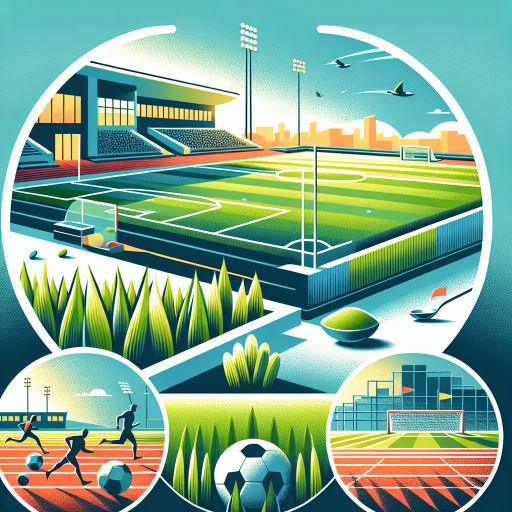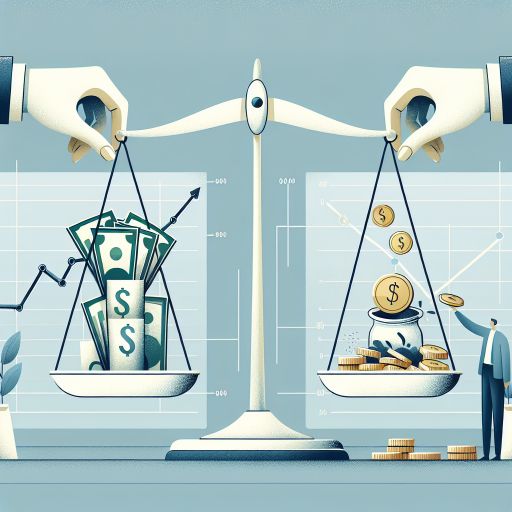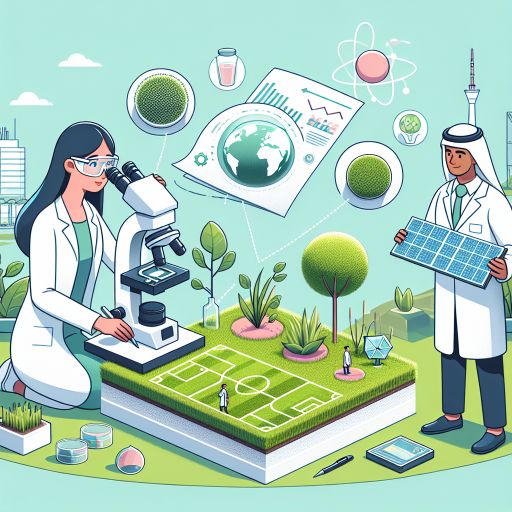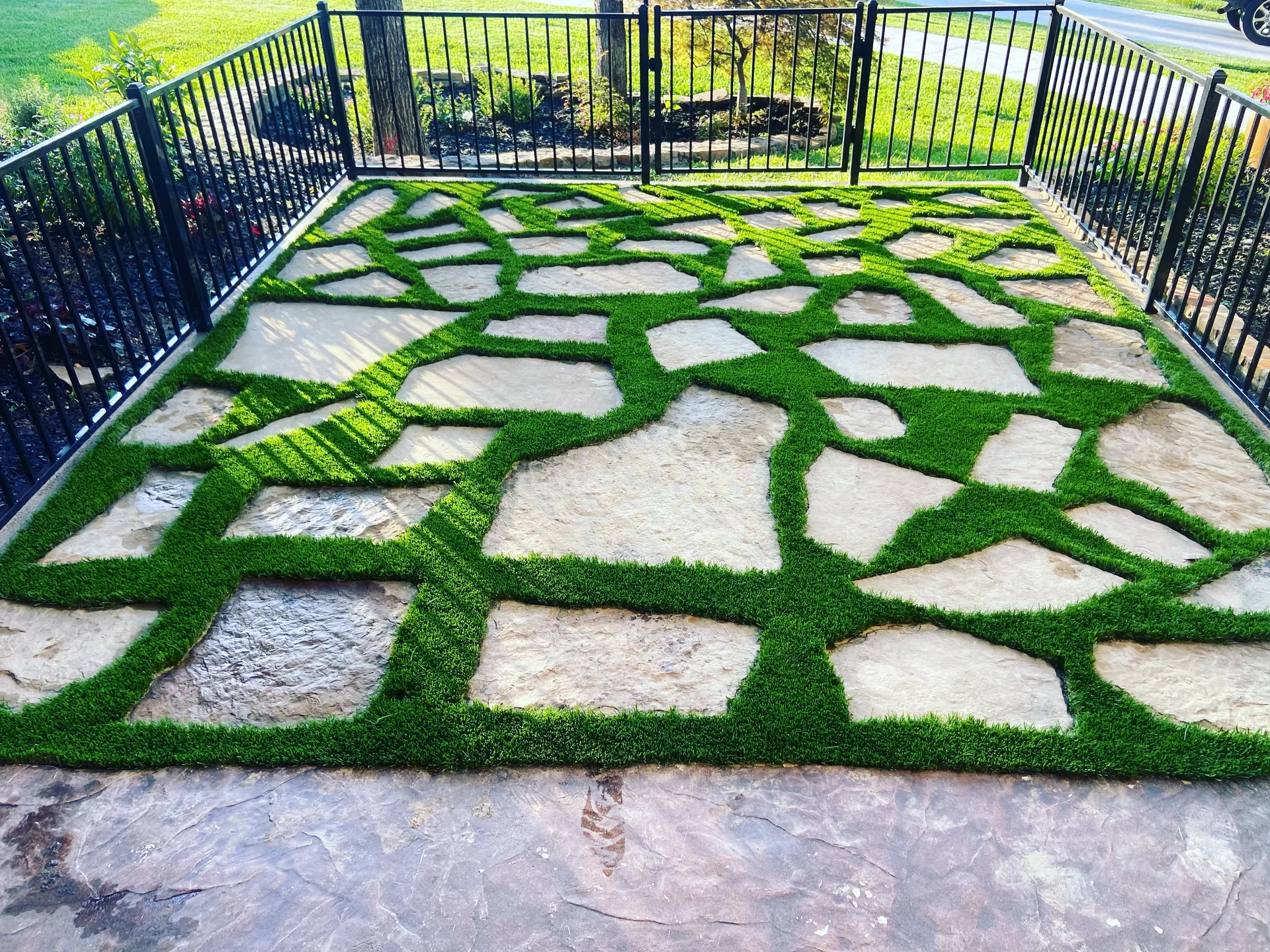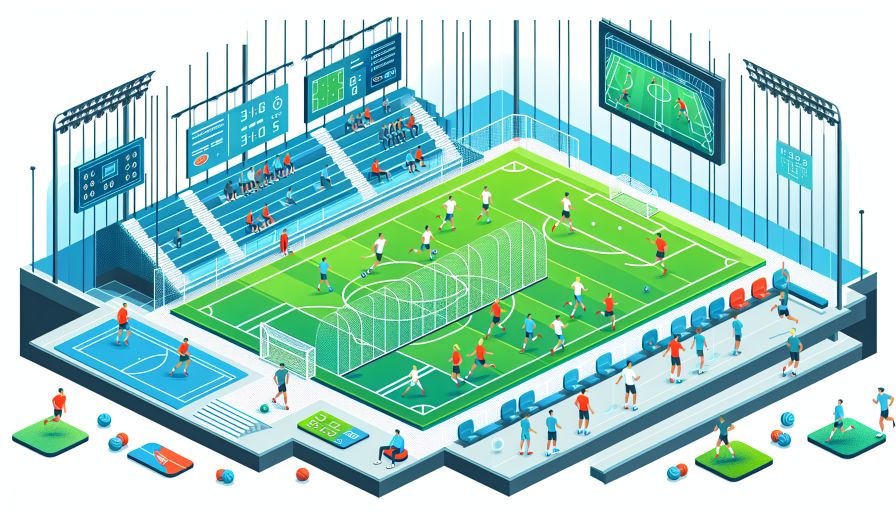
- Introduction to Synthetic Turf in Athletic Complexes
- Historical Development and Technological Advancements
- Benefits of Synthetic Turf in Sports Facilities
- Environmental Impact and Sustainability Considerations
- Economic Factors: Cost Analysis and Funding
- Safety and Performance: Real-World Studies
- Future Trends and Innovations in Synthetic Turf
Introduction to Synthetic Turf in Athletic Complexes
In recent years, synthetic turf has become an increasingly popular choice for athletic complexes. Originally developed in the 1960s, its initial application was seen in the sports industry to provide a consistent and durable playing surface. Modern enhancements have significantly improved its performance, making it a viable option for various sports and recreational activities.
Synthetic turf provides several advantages over natural grass, including reduced maintenance requirements, durability, and versatility in different weather conditions. These attributes have fueled its adoption across many athletic fields, from schools to professional sports venues.
One of the key factors driving the adoption of synthetic turf is its ability to withstand heavy use without deterioration. Natural grass fields can suffer damage from overuse, leading to wear patches and uneven playing surfaces. Conversely, synthetic turf can handle frequent usage while maintaining a consistent quality, making it ideal for multi-sport complexes and facilities with high player traffic.
Moreover, the advancements in turf technology have enhanced the playing experience. Modern synthetic turf systems often include layers designed to improve shock absorption and drainage, creating safer and more comfortable surfaces for athletes. These systems mimic the feel of natural grass, providing a balanced combination of performance and resilience.
In terms of composition, synthetic turf usually consists of a blend of materials that enhance its functionality. Common materials include:
- Polyethylene (PE)
- Polypropylene (PP)
- Polyamide (PA)
The table below summarizes the attributes of each material:
| Material | Attributes |
|---|---|
| Polyethylene (PE) | Soft and resilient, ideal for sports requiring sliding and physical contact. |
| Polypropylene (PP) | Durable and abrasion-resistant, suitable for high-traffic areas. |
| Polyamide (PA) | Highly resilient with excellent wear resistance, used in high-performance fields. |
In summary, the integration of synthetic turf in athletic complexes offers numerous advantages, including enhanced durability, versatility, and improved safety for athletes. As technology continues to evolve, the potential for synthetic turf in creating modern, efficient, and high-performance sports facilities is significant.
Historical Development and Technological Advancements
The journey of synthetic turf began in the 1960s, a period marked by innovative attempts to develop durable and versatile sports surfaces. The first widely recognized synthetic turf product was “AstroTurf,” which gained prominence when it was installed in the Houston Astrodome in 1966. This initial iteration of artificial grass was made of short, tightly-curled nylon fibers and, although revolutionary, had many limitations related to player comfort and durability.
As technology advanced, the 1980s saw the introduction of second-generation synthetic turfs. These improvements featured longer fibers made of polypropylene, offering a more grass-like appearance and enhanced functionality compared to first-generation products. Nevertheless, these turfs still faced challenges, particularly regarding surface hardness and the increased risk of player injuries.
The significant breakthrough in synthetic turf technology occurred in the late 1990s with the advent of third-generation (3G) synthetic turfs. These modern systems incorporated polyethylene or polypropylene fibers infilled with a mixture of sand and rubber granules. This combination provided a softer, more natural feel and dramatically improved player safety and overall performance. The 3G synthetic turf systems quickly gained traction and have since become the standard for many athletic complexes worldwide.
Further enhancements have continued into the 21st century, focusing on aspects such as fiber composition, backing materials, and infill technologies. Innovations have led to the development of monofilament fibers with superior strength and resilience, anti-static properties, and UV resistance, ensuring long-term durability and consistent performance even under extensive usage and varying weather conditions.
Backing materials have also seen significant advancements, with products now offering enhanced drainage capabilities and environmental benefits. For instance, integrated backing systems can facilitate rapid water evacuation, minimizing downtime due to weather and reducing the risk of water-related damage. Additionally, the incorporation of recyclable and eco-friendly materials in backing systems underscores the industry’s growing commitment to sustainability.
Infill materials, crucial for the overall performance and safety of synthetic turf, have likewise evolved. While traditional sand and rubber infills remain popular, new alternatives such as organic infills made from coconut husks and cork have emerged. These organic infills not only provide comparable performance characteristics but also contribute to the reduction of heat retention and potential environmental concerns associated with synthetic materials.
The continuous innovation in synthetic turf technology reflects the industry’s responsiveness to the diverse needs of modern athletic complexes. From player safety to performance optimization and environmental sustainability, the historical development and technological advancements of synthetic turf illustrate the profound impact this technology has had and will continue to have on sports facilities globally.
Benefits of Synthetic Turf in Sports Facilities
The implementation of synthetic turf in sports facilities offers a variety of benefits that enhance the overall experience for athletes, spectators, and facility managers. These benefits can be categorized into several key areas: durability, versatility, cost-effectiveness, and environmental adaptability.
Durability
One of the most significant advantages of synthetic turf is its durability. Unlike natural grass, synthetic turf can withstand heavy use without showing signs of wear and tear. This makes it a suitable choice for frequently used athletic complexes, which often host multiple sports and events. According to the Synthetic Turf Council, synthetic fields can endure over 3,000 hours of use per year, compared to 680 hours for natural grass fields.
Versatility
Synthetic turf is highly versatile and can be used for a wide range of sports such as soccer, football, field hockey, and lacrosse. This adaptability reduces the need for multiple specialized fields, thus optimizing land use. Additionally, synthetic turf can be customized to meet the specific needs of different sports, ensuring optimal playing conditions.
Cost-Effectiveness
While the initial installation cost of synthetic turf can be high, it proves to be cost-effective in the long run due to reduced maintenance expenses. Natural grass requires regular watering, mowing, fertilization, and pest control, all of which contribute to ongoing costs. In contrast, synthetic turf requires minimal maintenance, primarily limited to brushing, infill replenishment, and occasional repairs.
Environmental Adaptability
Synthetic turf is less affected by weather conditions compared to natural grass. It can be used in various climates and remains usable even after heavy rainfall, whereas natural grass fields often become muddy and unusable. This weather resistance ensures fewer game cancellations and more consistent playing conditions.
Comparison of Maintenance Costs
| Type of Field | Annual Maintenance Cost |
|---|---|
| Natural Grass | $35,000 – $50,000 |
| Synthetic Turf | $5,000 – $10,000 |
As demonstrated in the table, synthetic turf fields have significantly lower annual maintenance costs compared to natural grass fields. Over a typical lifespan of 8-10 years, the cost savings can be substantial.
Conclusion
The integration of synthetic turf in sports facilities provides numerous benefits that enhance the user experience and operational efficiency. With its durability, versatility, cost-effectiveness, and ability to perform under various weather conditions, synthetic turf has become a preferred choice for modern athletic complexes around the world.
Environmental Impact and Sustainability Considerations
When discussing the environmental impact and sustainability considerations of synthetic turf, it’s essential to evaluate both the positive and negative aspects. Synthetic turf has increasingly become a popular option for modern athletic complexes, and understanding its sustainability profile is crucial for informed decision-making.
One of the primary environmental benefits of synthetic turf is its reduced need for water. Traditional grass fields require substantial amounts of water for maintenance, especially in regions prone to drought. With synthetic turf, water usage can be significantly decreased, conserving a critical natural resource. According to studies, maintaining a natural grass field can use up to 50,000 gallons of water per week during peak growing season, a requirement completely eliminated with synthetic alternatives.
Additionally, synthetic turf minimizes the need for pesticides and fertilizers. Conventional grass fields often require chemical treatments to maintain their health and appearance. These chemicals can run off into local water supplies, contributing to pollution. Synthetic turf, by contrast, does not require regular chemical treatments, reducing the environmental load of harmful substances introduced into the ecosystem.
In terms of sustainability, Prime Design Turf exemplifies how companies within this industry can prioritize eco-friendly practices. With over 20 years of experience, Prime Design Turf focuses on creating environmentally responsible products while delivering top-quality synthetic turf solutions. Their commitment to reducing toxic substances and promoting safety is evident in their array of services, from residential gardens to extensive sports fields.
Another significant aspect to consider is synthetic turf’s longevity and reduced maintenance. Natural grass fields typically require frequent mowing, reseeding, and other labor-intensive upkeep which consumes fuel, typically from non-renewable sources. Synthetic turf, however, requires minimal ongoing maintenance, thereby reducing the carbon footprint associated with its upkeep.
Despite these advantages, synthetic turf also poses some environmental challenges. For example, the production of synthetic turf involves the use of plastic materials, which can contribute to environmental degradation if not managed responsibly. Furthermore, the end-of-life disposal of synthetic turf can be problematic if it is not recycled or repurposed properly. Prime Design Turf addresses these concerns by working on innovative recycling programs and exploring biodegradable materials that aim to mitigate the environmental impact of synthetic turf disposal.
Moreover, the heat retention in synthetic turf, often referred to as the ‘heat island effect,’ can present localized environmental issues. Synthetic materials can reach higher temperatures than natural grass, potentially affecting the surrounding microclimate. To counteract this, companies like Prime Design Turf are researching and developing advanced cooling technologies as part of their product offerings, aiming to make synthetic turf a more sustainable option in various climates.
In conclusion, the environmental impact and sustainability considerations of synthetic turf in athletic complexes are multifaceted. While synthetic turf offers significant advantages, particularly in water conservation and chemical use reduction, it also presents challenges that need to be addressed through ongoing innovation and responsible practices. Companies such as Prime Design Turf are leading the way in balancing these factors, ensuring that synthetic turf remains a viable and environmentally conscious choice for modern athletic facilities.
Economic Factors: Cost Analysis and Funding
The integration of synthetic turf in modern athletic complexes is not only a matter of enhancing sports performance and facilities but also heavily influenced by various economic factors. Understanding the financial implications, including cost analysis and funding mechanisms, is crucial for stakeholders considering the adoption of synthetic turf solutions.
Initial Investment and Installation Costs
The initial cost of installing synthetic turf can be substantial. On average, the installation expenses range from $6 to $10 per square foot, depending on factors such as the quality of the turf, the complexity of the installation, and geographical location. This price includes site preparation, drainage systems, and the turf material itself. According to the Synthetic Turf Council, a full-size football or soccer field can cost approximately $800,000 to $1,000,000.
Maintenance and Longevity
Despite the high initial costs, synthetic turf often presents lower long-term maintenance expenses compared to natural grass. Annual maintenance costs for synthetic turf typically range from $5,000 to $20,000, which is significantly lower than the $20,000 to $40,000 generally required for natural grass fields. Maintenance activities include brushing, infill replenishment, and minor repairs, ensuring that the turf remains safe and functional.
Cost Savings and Economic Benefits
Over its lifespan, synthetic turf can offer substantial cost savings. These savings stem from reduced water consumption, lower maintenance frequency, and the elimination of costs associated with fertilizers, pesticides, and mowing. A 2016 report by the Sports Turf Managers Association (STMA) noted that synthetic turf fields could save schools and sports programs up to $35,000 annually in maintenance costs. Additionally, the revenue generated from increased field usage can offset the initial installation costs. Synthetic turf fields can sustain higher usage rates and host a variety of events without the downtime required for natural grass recovery.
Funding Opportunities
To manage the high initial costs, various funding opportunities are available. Municipal bonds, corporate sponsorships, and public-private partnerships can provide essential financial support. Grants from organizations such as the NFL Foundation Grassroots Program, which has funded the construction or renovation of over 365 fields nationwide, are also a viable option. This program alone has provided more than $46 million in funding since its inception in 1998.
Return on Investment (ROI)
The financial return on investment for synthetic turf is multifaceted. A study conducted by the Synthetic Turf Council indicated that institutions might recover the initial installation costs within 3 to 5 years, considering the savings on water, labor, and chemical treatments. Moreover, the ability to host more events and tournaments can lead to additional revenue streams, further enhancing the ROI.
In conclusion, while the upfront costs of synthetic turf are considerable, the long-term economic benefits, including maintenance savings and added revenue opportunities, make it an attractive option for many athletic complexes. Thorough cost analysis and exploration of funding options are essential steps for stakeholders to ensure financially sound decisions when considering synthetic turf installations.
Safety and Performance: Real-World Studies
Safety and performance are critical considerations when evaluating synthetic turf for modern athletic complexes. Numerous real-world studies have been conducted to understand how synthetic turf compares to natural grass in these aspects.
One key area of focus is athlete injuries. Research indicates mixed results, with some studies suggesting that synthetic turf may lead to a higher incidence of certain types of injuries, such as anterior cruciate ligament (ACL) tears, while others find negligible differences compared to natural grass. A study published in the American Journal of Sports Medicine analyzed injuries in high school athletes and found a slight increase in the rate of minor injuries on synthetic surfaces. Conversely, some investigations, like those backed by FIFA, report no significant discrepancy in overall injury rates.
Temperature is another concern frequently cited in studies of synthetic turf. Synthetic surfaces can reach temperatures significantly higher than natural grass, often exceeding 60 degrees Celsius (140 degrees Fahrenheit) in direct sunlight. This can elevate the risk of heat-related illnesses among athletes. Studies by Penn State University demonstrate that synthetic turf can be as much as 35 degrees Celsius (65 degrees Fahrenheit) hotter than natural grass under the same conditions.
Beyond injuries and temperature, the performance characteristics of synthetic turf have also been scrutinized. Various parameters, such as shock absorption, surface friction, and ball roll, are examined to ensure that synthetic turf meets the standards for professional play. The Fédération Internationale de Football Association (FIFA) has established rigorous testing protocols that synthetic turf surfaces must pass to be certified for use in official matches. These protocols evaluate aspects such as ball rebound and roll, ensuring consistency and performance akin to natural grass.
Finally, the lifecycle and maintenance of synthetic turf influence its safety and performance. Research by the Sports Turf Research Institute (STRI) emphasizes that regular maintenance, including brushing, infill replenishment, and sanitation, is essential for sustaining the safe and high-performance characteristics of synthetic turf. Neglecting these practices can lead to degraded surface conditions, increased injury risks, and reduced performance quality.
In summary, real-world studies highlight the nuanced safety and performance attributes of synthetic turf. While it offers many benefits, ongoing research and stringent maintenance practices are crucial to mitigating potential risks and ensuring that synthetic turf surfaces provide a safe and high-quality environment for athletes.
Future Trends and Innovations in Synthetic Turf
Looking ahead, the future of synthetic turf promises continued innovation and adaptation to meet the evolving demands of modern athletic complexes. Emerging trends and cutting-edge technologies are likely to further enhance the performance, safety, and sustainability of these surfaces.
One notable trend is the integration of advanced materials that improve the durability and resilience of synthetic turf. Researchers are exploring new polymer blends and backing materials designed to extend the life span of artificial grass fields while maintaining optimal performance characteristics. These improvements aim to reduce the frequency of replacements, yielding both economic and environmental benefits.
Another area of development is the enhancement of infill materials. Manufacturers are seeking alternatives to traditional crumb rubber, focusing on organic and eco-friendly options such as cork, coconut husks, and other plant-based materials. These new infills not only address environmental concerns but also improve safety by reducing heat absorption and providing a softer playing surface.
With the rise of smart technologies, synthetic turf installations are becoming increasingly interconnected. The integration of sensors and data analytics tools enables real-time monitoring of field conditions, such as temperature, moisture levels, and usage patterns. This technology provides valuable insights for maintenance planning and ensures the optimal performance and safety of the turf over time.
Another innovative development is the use of recyclable materials in synthetic turf production. Efforts are being made to design turf systems that can be fully recycled at the end of their life cycle, minimizing waste and reducing the environmental footprint. Companies are investing in research to create closed-loop systems where old turf can be repurposed into new products without loss of quality.
Environmental sustainability remains a significant focus for the industry. Advances in manufacturing processes aim to reduce the carbon footprint of synthetic turf by optimizing resource use and incorporating renewable energy sources. Water conservation benefits of synthetic turf are also driving investments in technologies that further minimize water usage, such as improved drainage systems and maintenance protocols.
From a performance perspective, enhancements in biomechanical properties are on the horizon. Innovations aim to create turf surfaces that more closely replicate natural grass in terms of ball behavior, traction, and shock absorption. These advancements support improved athletic performance while mitigating the risk of injuries.
Overall, the future of synthetic turf in athletic complexes is characterized by a commitment to sustainability, safety, and innovation. As technology continues to evolve, so too will the capability of synthetic turf to meet the high standards required by modern sports facilities, ensuring that athletes have access to high-quality, reliable playing surfaces.
